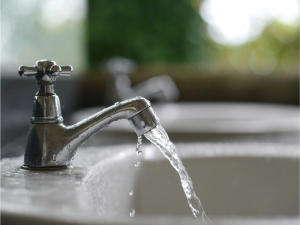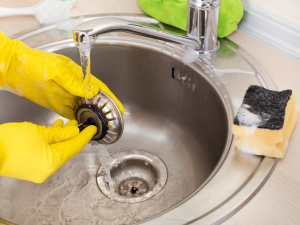You have noticed water seeping out of your toilet or an unpleasant smell that you cannot tell where it’s coming from. Discovering a puddle of water around your toilet can be mind-boggling, and you could be dealing with a toilet leak. While it is not always an emergency, fixing a leaking toilet as soon as you discover it is essential. The water seeping can not only damage the first-floor ceiling in your entire bathroom and the flooring but also poses a health risk to your family. Luckily, fixing a leaking toilet is not as complicated as it sounds. Here is a step-by-step guide on how to fix a leaking toilet.
Why is your toilet leaking?
Before we dive in on how to fix a leaking toilet, let’s first discuss the possible causes of that leak.
- Faulty wax rings– The leak in your toilet could be caused by faulty wax rings around the toilet to the drain. In most instances, this is unavoidable especially in a scenario where the wax ring has grown old. Also, if your toilet becomes loose, the wax ring will not provide a good hold.
- Loose bolts around the toilet– The base of the toilet is secured by tee bolts. If these get loose, the toilet will be unstable which in turn breaks the wax ring seal. Loose bolts around your toilet often cause water to leak after every toilet flush.
- Condensed water dripping from the outside of the porcelain tank or bowl– The water in the toilet bowl can get extremely cold, causing humid room air to condense. The condensed water then drips down on the floor. Those droplets on the porcelain tank or bowl do not always mean that the bowl is leaking.
Now, to fix the leak
Start by checking for condensation
You don’t want to start a toilet repair procedure and realize that the “leak” is caused by condensation. Luckily, condensation is easy to spot. If you realize that the leak is caused by water condensation, you can prevent the water puddling by:
- Installing a drip tray– A drip tray is an affordable and simple way to ensure that you keep condensed water off your toilet floor. While they will not provide permanent solutions, they come in handy before you implement a permanent solution.
- Keep your bathroom aerated– A stuffy bathroom only accumulates humidity leading to water condensation. You want to ensure that you always leave the bathroom door open, especially with the water condensation issues. Also, taking shorter showers, leaving the fans on as well as taking cooler showers especially when it’s hot outside will help eliminate or reduce water condensation around your toilet.
- Is your flapper faulty? – The leaks from your toilet bowl could be caused by a faulty flapper. Toilet flappers are very durable. However, they wear out over time, often necessitating replacements. To replace the faulty flapper, start by switching off the water at the supply tank and flush the toilet. Attach the new flapper to the pegs of the flush valve tube. You can also slide the flapper on the overflow tube. To ensure it is properly installed, test it several times and ensure that there are no more leaks.
If you are sure the leak is not a condensation issue, proceed to the next possible solution.
Have the tee bolts loosened over time?
Tightening the tee bolts may eliminate the toilet water leak problem. Start by removing the plastic covers on both sides of the toilet base. Using an adjustable box-end wrench, tighten the bolts. This presses the toilet down on the floor and compresses the wax ring, hence restoring the seal. In some instances, it might be impossible to tighten the bolts. In this case, you will need to reseat the toilet, install new tee bolts as well as a new wax ring. If you still experience leaks even after tightening the tee bolts, then the wax ring could be worn out. If you’re having a hard time figuring this out, don’t hesitate to contact a plumbing professional.
Replacing the wax ring
Most toilet leaks are caused by worn-out or damaged wax rings. Before you initiate the process of replacing the wax ring, ensure you purchase the variation that will work well with your toilet model. Shut off the toilet water supply at the main source or the valve attached to the toilet’s water fill valve. Also, ensure that the toilet bowl is empty by flushing the toilet and removing any water remaining in the bowl using a sponge.
After removing the nuts from the tee bolts, lift the toilet and place it aside. To avoid expensive accidents such as dropping the toilet, ensure you have someone help you lift the toilet. If the tee bolts are faulty, you will have to replace them. Use a sharp object such as a knife to scrape off the old wax ring. Since older wax rings can be grimy, ensure you use gloves and have trash bags ready.
To install the new wax, start by placing the new wax ring on the drain opening. Ensure that the tee bolts are properly placed on each side of the drain flange. Also, the plastic cone should be positioned down into the drain.
With a helping hand, lift the toilet and place it over the drain. Ensure that the tee bolts align with the holes on the base of the toilet. Press the toilet into the wax ring using your body weight and compress the wax. The tee bolts should be snug. Over-tightened tee bolts may crack the porcelain.
Switch on the main water supply, flush the toilet and inspect for any leaks. If there are no leaks, finish off the process by running tile caulk around the toilet base. If the toilet loosens over time, tighten the tee bolts to help the wax stay intact.
How can you prevent toilet leaks?
While repairing toilet leaks is an easy DIY process, prevention remains better than a cure.
Here are some measures you can undertake to prevent constant toilet leaks.
- Avoid using harsh chemical drain cleaners- While we all want a clean and sanitary toilet, using harsh chemical drain cleaners to unclog the toilet can damage older pipes and fixtures. They can also damage the septic system, not forgetting the dangers exposed to your family if these chemicals splash on the skin, eyes, and even lungs.
- Inspect your toilet regularly- Most major toilet leaks can be prevented if detected early.
- Do not take too long to fix that small leak- That one drop that you overlook can potentially cause more problems.
- Do not flush anything else other than human waste and toilet paper.




